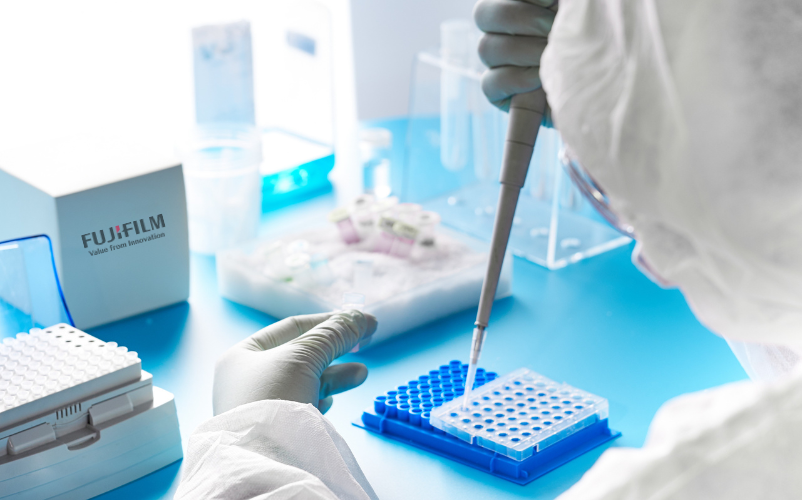USP’s Status Regarding the Pyrogen Test and Endotoxin Animal-Free Test Methods
The absence of harmful pyrogens is a critical requirements for the production of injectables. The most common pyrogens in parenteral drug production are bacterial endotoxins, which are part of the gram-negative bacterial cell wall. The Bacterial Endotoxins Test <85> has defined the primary methods for in-vitro bacterial endotoxin detection in parenteral products for the past 38 years.[1]
Ongoing efforts, however, prioritized the use of non-animal pyrogen testing alternatives, specifically adapting non-animal versions of pyrogen and endotoxin testing.
USP’s Status on RPT, and BET Test Methods
RPT (Rabbit Pyrogen Test)
The pyrogen test ensures that injectable products pose minimal risk of fever in patients. This is covered in USP general chapter <151>. This test measures the temperature increase in rabbits after an intravenous injection of the test solution; it's designed for products rabbits can tolerate in doses up to 10 mL/kg intravenously within 10 minutes. In suitable cases, validated in vitro tests for pyrogens or bacterial endotoxins can replace the in vivo rabbit pyrogen test.[2]
BET (Bacterial Endotoxin Test)
The FDA and USP accept several different LAL-based endotoxin testing methods. Four commercially available FDA-approved methods currently used for end-product release testing are: (i) the gel-clot; (ii) the turbidimetric; and (iii) the chromogenic assay. Reagents for LAL methods must be sourced from an manufacturer in compliance with the appropriate regulatory body, and be specifically designed for the intended method. The USP <85> includes a specific description of the LAL assay for endotoxin testing in the context of pyrogen testing.
USP’s Status on Animal -free pyrogen test methods
Recombinant reagents
The United States Pharmacopeia–National Formulary (USP–NF) has been updated by the USP Microbiology Expert Committee to include Chapter <86>, "Bacterial Endotoxins Test Using Recombinant Reagents," thereby authorizing the use of non-animal-derived reagents in endotoxin testing.[3]
The bacterial endotoxin assays detailed in the subsequent chapter constitute supplementary methodologies to those presented in Chapter <85>, Bacterial Endotoxins. This chapter details methodologies employing both recombinant Cascade Reagent (rCR) and recombinant Factor C (rFC) reagents, offering guidance to pharmaceutical manufacturers on their integration into quality control procedures for novel and extant products.[3]
Manufacturers currently utilizing LAL for endotoxin testing may proceed without interruption; this chapter <86> presents no alterations to their processes. The Bacterial Endotoxins Tests (BET) detailed in the chapter <86> represent supplemental methodologies to the Bacterial Endotoxins Test outlined in the preceding chapter. The purpose of this new chapter is to facilitate the use of non-animal-derived reagents by manufacturers, consistent with the USP's objective of reducing the use of animal-derived components. This chapter permits manufacturers of novel biopharmaceuticals to utilize either rFC or rCR needing to perform comparison studies to the LAL method. Manufacturers of established products seeking to transition to animal-free reagents should provide method comparison data.[4]
MAT (Monocyte Activation Test)
In accordance with the FDA guidelines for industry on Pyrogen and Endotoxin testing, it is necessary to conduct product-specific validation to determine if a specific test substance or material is suitable for evaluation using the MAT technique. The validation process should include a full validation of the considerations found in USP <1225>. FUJIFILM Wako has manufactured a standardized kit for the detection of pyrogens by the MAT assay called lumiMAT™. FUJIFILM Wako provides a full validation package that the user can replicate with the validation. This includes testing against RSE, NEPs, and accompanying suitability testing for different samples.[5]
Reference:
- Rockville, Future of Endotoxins and Pyrogen Testing: Reference Standards and Procedures. USP, 2019.
- USP-NF/PF, ⟨151⟩ Pyrogen Test.
- Rockville, M., Expert Committee approves endotoxin testing using non-animal derived reagents. usp, 2024.
- USP-NF/PF, <86> Bacterial Endotoxins Test Using Recombinant Reagents. 2023.
- Sandle, T., FDA guidance on pyrogens and endotoxin testing.



